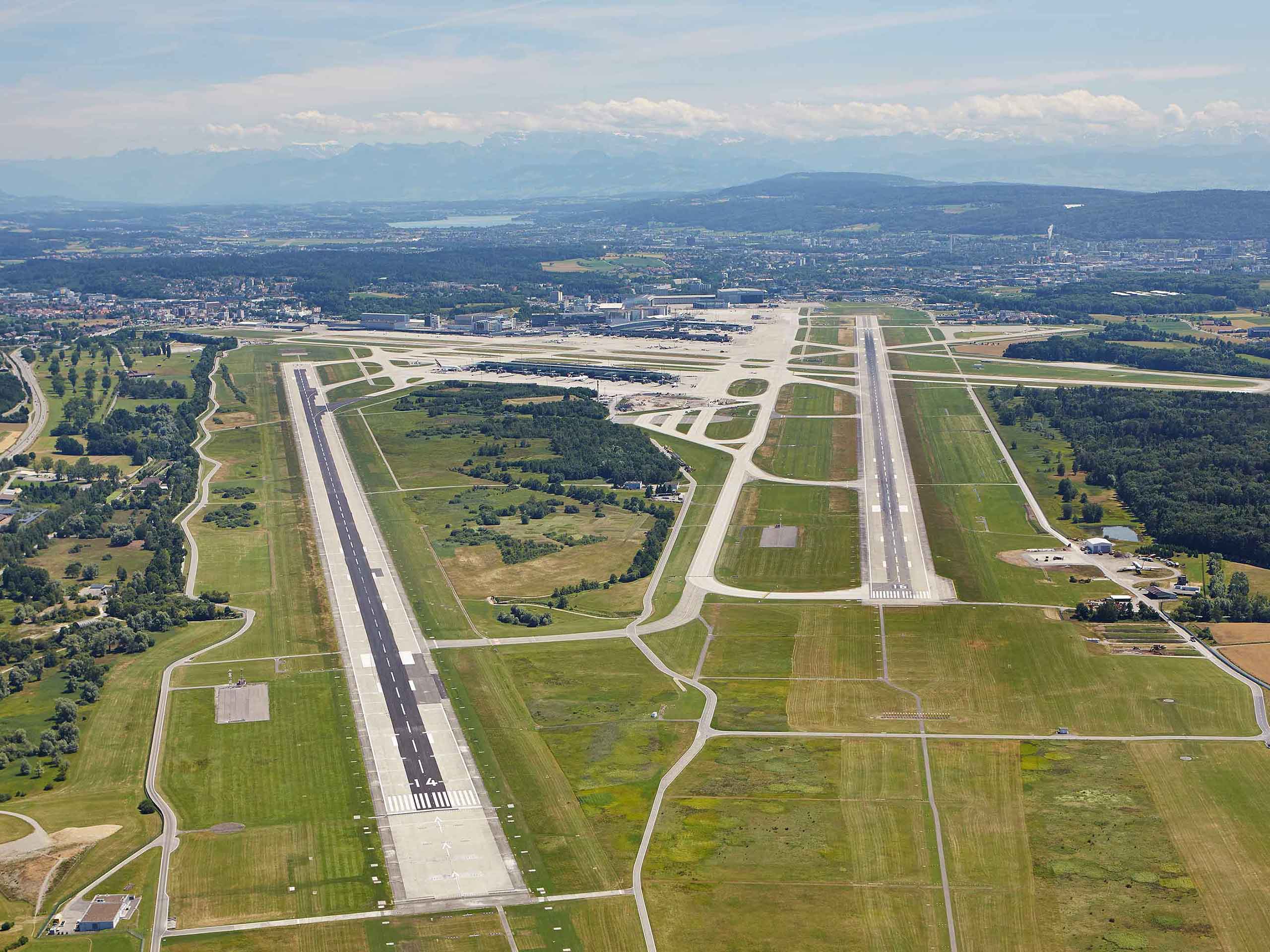The entire ground lighting system plus the heavily used runway centreline was completely replaced.

New center strip for runway 14-32
Runway 14-32 was commissioned in 1976. It was designed to have a service life of 30 years. Owing to the heavy use of the main landing runway and the long period of use, the pavement on runway 14-32 was so badly damaged that complete replacement was necessary.
Since 2003 costly maintenance work has been required every year in order to maintain safe runway operations. Since the runway had already exceeded its service life and was requiring a greatly increasing amount of maintenance, planning for its complete renovation began in 2010. The entire ground lighting system plus the heavily used runway centreline to a width of 22.5 m was completely replaced.
A variety of renovation options were investigated during project planning. The main criterion was the ability to maintain normal flight operations for the entire duration of the renovation work. In order to do so, Flughafen Zürich AG decided to carry out the main renovation work during night hours from March to October, in the same way as it had done when resurfacing runway 16-34 in 2008. The work on the runway was carried out during a 9-hour window between 10 p.m. and 7 a.m. on 5 nights a week. Numerous specific measures to mitigate the noise resulting from the construction work were put in place.
Following the granting of planning permission by DETEC in April 2012, preliminary work commenced in the summer of 2012. This included extending the Hell substation as well as laying new supply lines on either side of the runway and 600 km of new cabling. The preliminary work was successfully completed at the end of 2013 as the prerequisite for the main work was carried out between March and October of 2014.
Main work
The runway pavement (30 cm thick concrete) was ripped up to a width of 22.5 m along the entire runway length of 3'300 m and was be replaced by a multi-layered asphalt pavement with a total thickness of 36 cm. In order to achieve the required thickness of 36 cm, as well as removing the concrete pavement, 6 cm of the base course was also needed to be removed. The asphalt pavement comprises three courses: In a first stage, the bearing and binder courses were laid during the same night. To level out any unevenness at the joints, 4 cm of the binder layer were removed in on night shifts, then the definitive surface course is applied.
